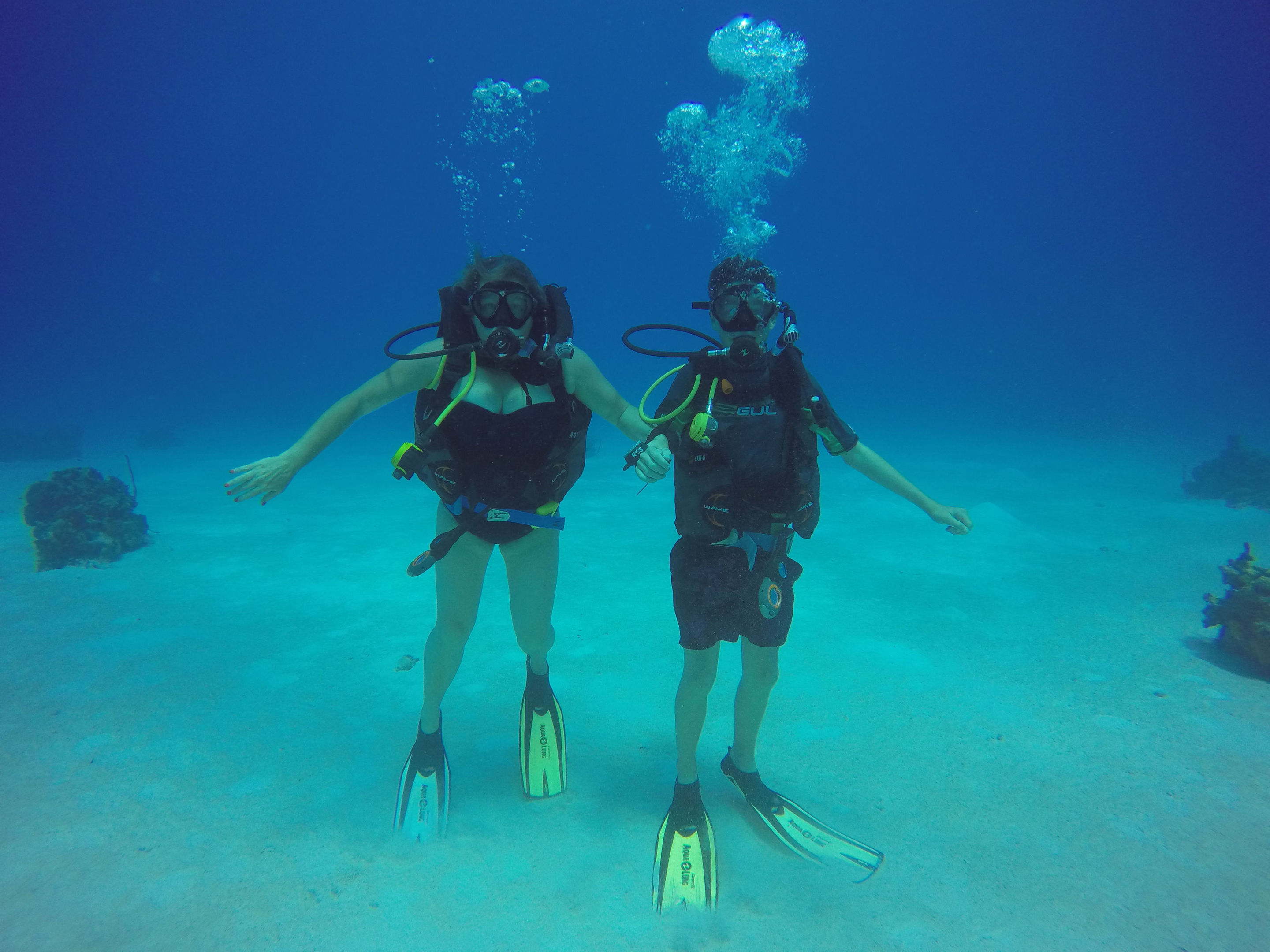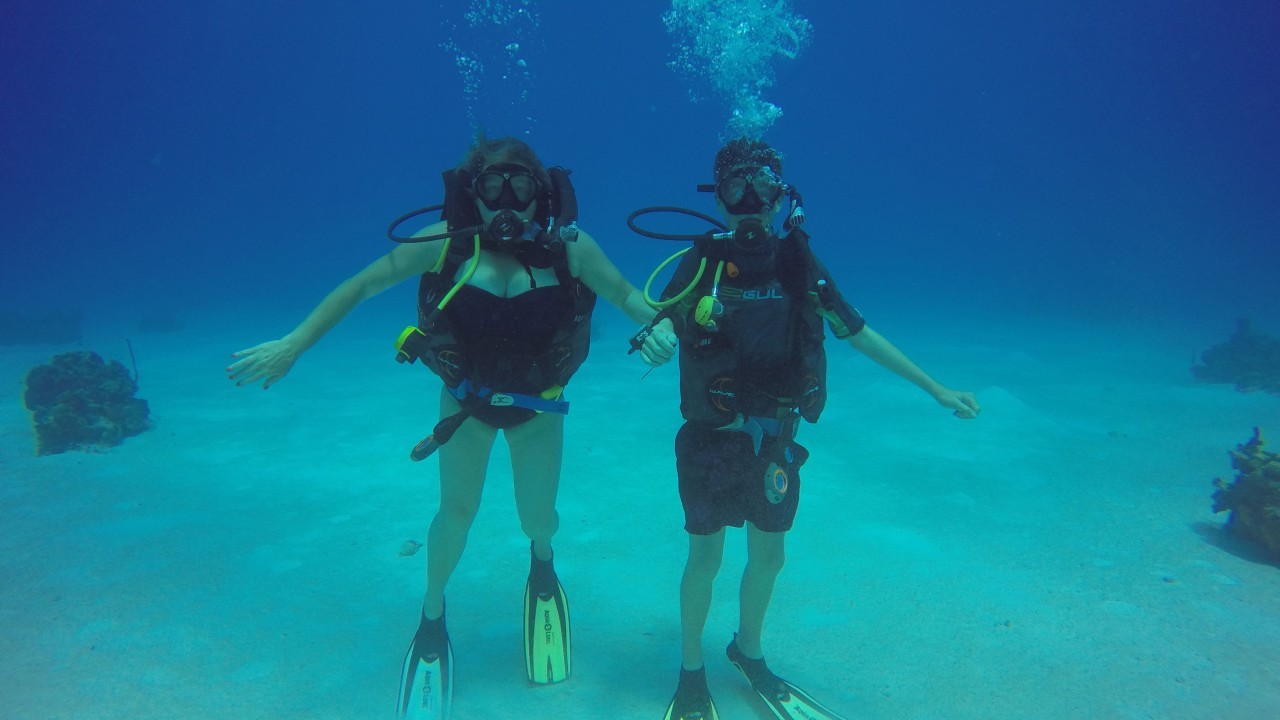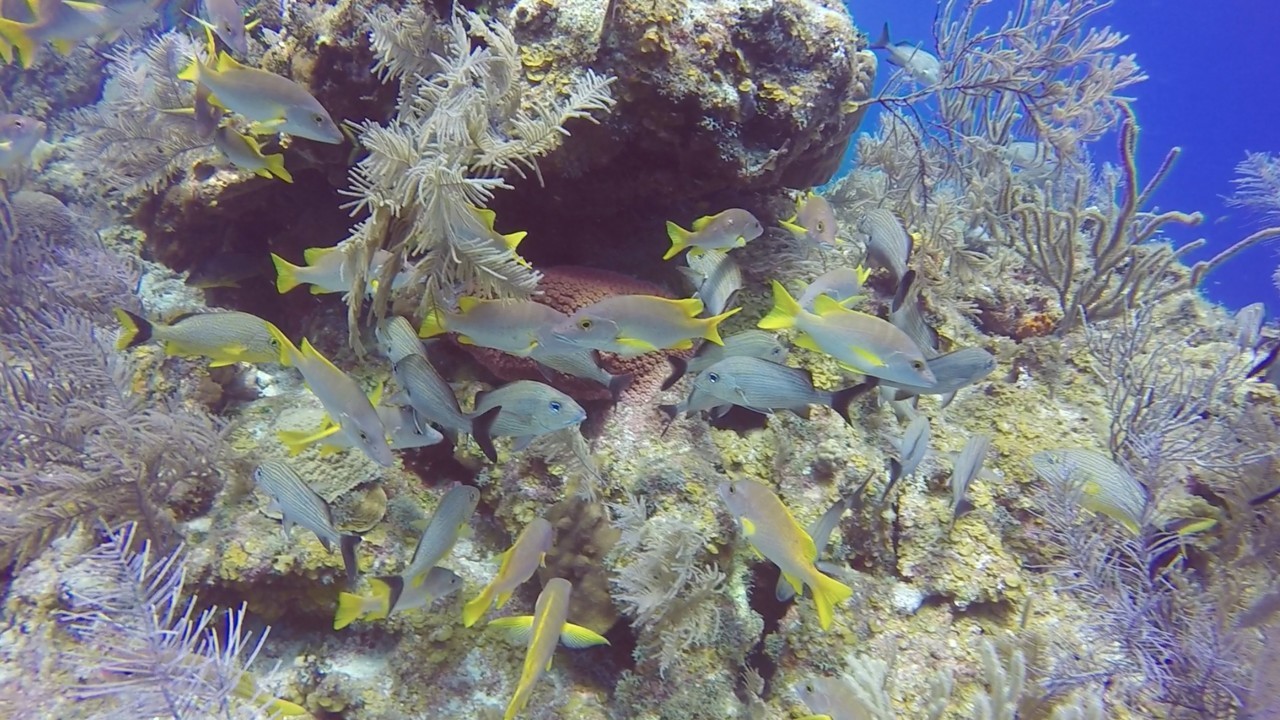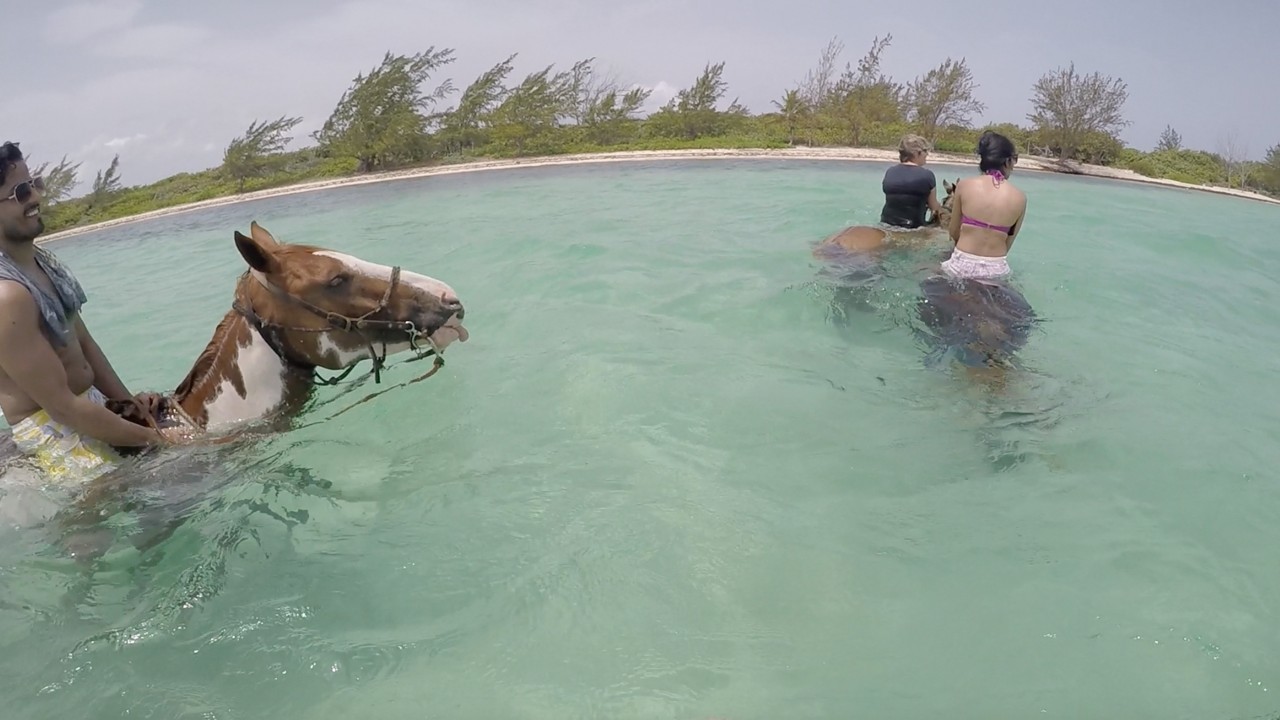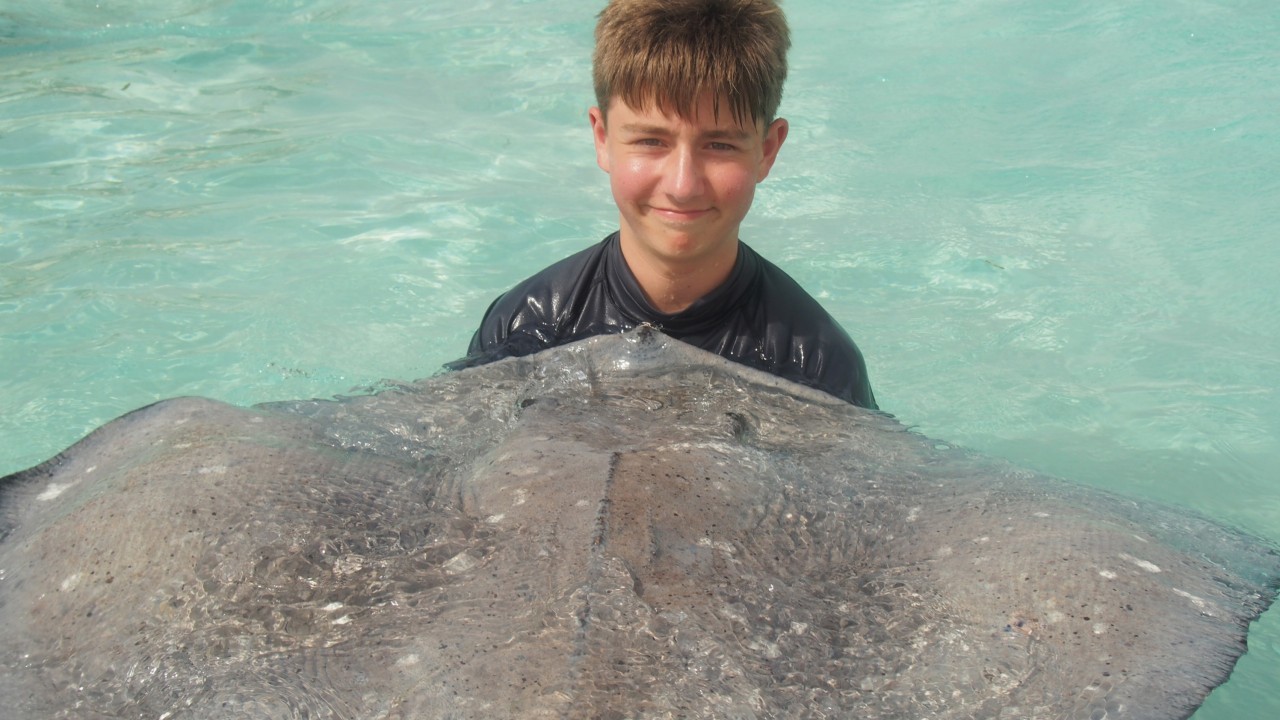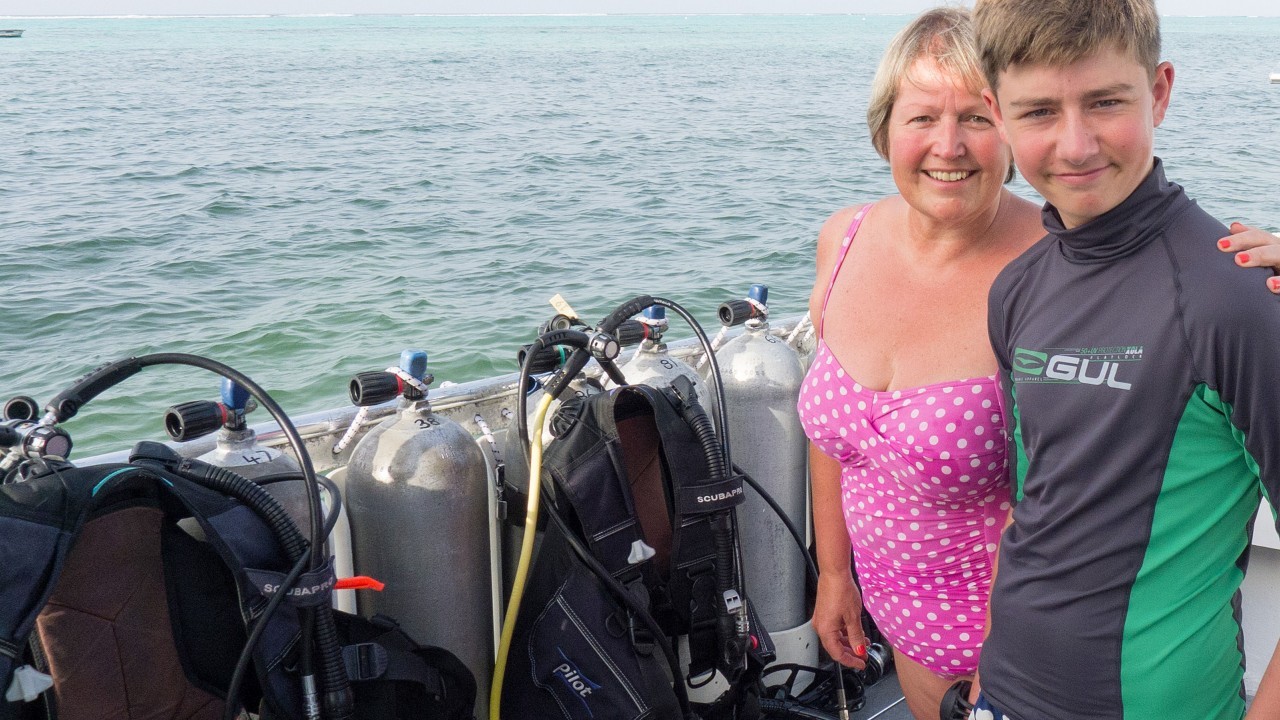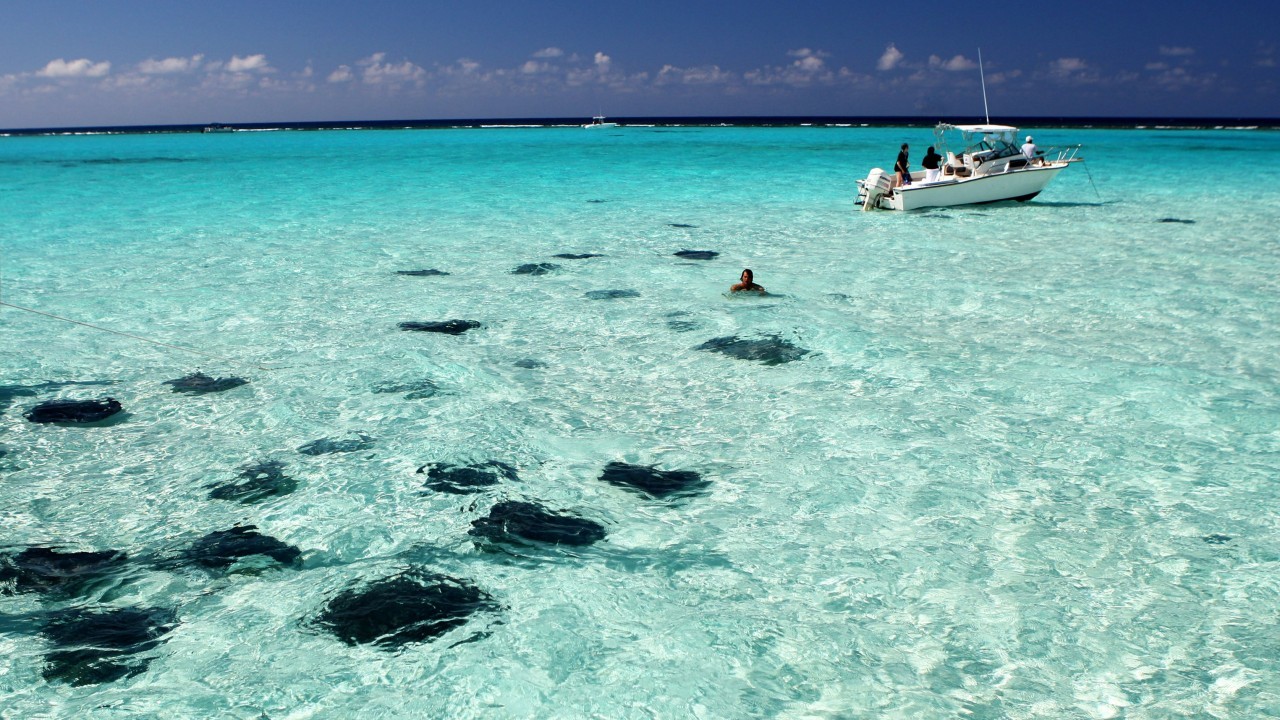As diving study becomes more accessible via e-courses, Hannah Stephenson and her son Will buddy up for a PADI course in the Cayman Islands, where the classroom work is done at home
“If you kiss a stingray, it means seven years good luck,” our genial skipper jokes before we tentatively enter the sea, amid what looks like giant flat mushrooms.
We’re in Stingray City, the most popular attraction of the Cayman Islands in the Caribbean, where these enormous, elegant creatures gather to be petted and fed chunks of squid by the hordes of enthusiastic tourists who come to see them every year.
It’s a unique attraction 20 minutes by boat from Grand Cayman, where vessels moor at a sandbank and invite passengers to mingle with the stingrays in the waist-high water. It’s controlled in that about 50% of the rays are clipped (their stings removed) but uncontrolled in that it’s in open water, so anything is possible.
After initial trepidation and reluctance to walk on the sandbar in case we step on one, we are stroking the smooth underbellies of these gentle, gliding fish as they suck the squid from our hands into their powerful jaws.
Fishermen used to clean their catch on the shallow sandbars here, unwittingly giving rays a five-star feast of fish guts and effectively luring them to the spot.
My 16-year-old son Will and I have come to the Cayman Islands, a trio of islands in the British West Indies – south of Cuba and west of Jamaica – to dive, and specifically to pass our PADI open water certificate which, when completed, will allow us to dive to depths of 60ft without an instructor.
The Caymans – Grand Cayman, Cayman Brac and Little Cayman – are ideal for learners thanks to their calm, warm waters, high visibility underwater, professional dive schools and English as the first language. They’re still a British territory, but most visitors are American.
Normally this PADI course takes between five days and a week but, as we don’t want to spend our holiday time in a classroom, we do a referral course, completing the theory via an e-learning course and pool work at home beforehand.
The computer-based study takes around 15 hours to complete, teaching you the basics of diving, section by section, with video illustration and multiple-choice tests. It’s followed by several pool sessions in the UK, then you complete the final four dives in the resort of your choice. Some dive operators only offer the PADI open water diving course to people who’ve already done the e-learning theory, so check before you book.
We set off from the famous Seven Mile Beach, a dazzling strip of white sand and picture postcard azure sea, for our first dive on a boat captained by Chris ’Crispy’ Ploughman, an ex-nightclub owner from Middlesbrough, who gave it all up for diving.
He tells me that many of the dive boat captains and instructors are British, because in this tax-exempt haven, the locals would rather be bankers than dive-masters.
“The Caymanians don’t run dive schools as they don’t make enough money from it, but for me, diving gives you a passport to travel.”
As we prepare for our first dive, our young Canadian instructor Devon tells us to look out for Kiki, a nurse shark with a scar down one side of her face, who may appear from nowhere and gently nudge up to you like a puppy, but never aggressively.
Devon says we’re also likely to see turtles – they are prolific around the Cayman Islands, which was originally called Las Tortugas (Spanish for turtles) by Christopher Columbus, who came across the islands in 1503.
Right on cue, as we plunge into the tepid waters at Governor’s Reef – no wetsuits needed here where the water remains between 82-85 degrees – we encounter a large green sea turtle foraging for food. We don’t, thankfully, bump into Kiki.
Shadowing the reef, we see petrol blue parrotfish, sharp, skinny barracuda, huge, beefy grouper and shoals of tiny multi-coloured fish darting between the coral. It’s a riot of aquatic activity in a world where the only sound is your breathing, or the occasional tap on your oxygen tank when your buddy has seen something he wants to share.
Loggerhead, hawksbill and green sea turtles are common on the west side, where hotels line Seven Mile Beach, while you’re more likely to spot reef sharks and nurse sharks at the choppier east end of the island.
Grand Cayman, 22 miles long by eight miles wide, has other attractions – a turtle farm, native blue iguanas, horseback riding in the sea, kayaking and bioluminescence tours at quirky Rum Point – but we are here to pass our diving test.
On the fourth and final dive of the course, resting on the bottom at 60ft, we are instructed to remove our masks, put them back on and clear them of water. It’s the only time I consider how far down we are and what I might do if it all went pear-shaped.
Two days later, Will and I are on our first dive as certified divers in Little Cayman, the smallest of the islands and the one from which you can access Bloody Bay Wall, the most famous reef of the Caymans, which runs alongside a tremendous abyss, a seemingly bottomless blue hole. This is not the place you want to drop your underwater camera.
We can now go 60ft down without an instructor but do I feel truly qualified? Not sure. Still, we’re in good company. There are eight other divers on board of varying ages, all of whom are qualified and one who has clocked up a staggering 1,700 dives.
There’s good-hearted banter as divers exchange anecdotes of ’awesome’ sightings and pass round the anti-fog liquid for their masks.
Descending into Mixing Bowl, where coral fans and tubes provide fascinating nooks and crannies for a wealth of sealife, we look beyond the reef into the deep blue bottomless chasm, my son initially hovering above me, reluctant to descend into infinity.
But the diver who’s clocked up 1,700 dives beckons us to join him another 10ft down, pointing with his tiny torch at a huge lobster nestled in a hole in the coral wall, its sharp antennae waving animatedly outside its home. Will and I descend tentatively at first, constantly checking that each is okay with the hand signals we’ve learned.
Then another diver alerts us to a sizeable grouper nearby and before I know it, I’m tickling this enormous fish under its fins, on the white of its belly, like it was some compliant domestic pet. I’m told later that they enjoy being tickled, because the action removes parasites from their body.
Buoyed by this encounter, we are gently coaxed into our first swim-through, following the line through a narrow gulley between coral walls, the grouper shadowing us like a faithful dog. We emerge the other side exhilarated and fuelled by the encouragement of our new dive buddies.
Perhaps diving has given ’Crispy’ Ploughman a passport to travel. But it has also given Will and I a passport to a whole new world – both above and below the surface.
TRAVEL FACTS
Hannah Stephenson was a guest of the Cayman Islands Tourist Board (www.caymanislands.co.uk).
:: Oyster Diving (www.oysterdiving.com; 0800 699 0243) offers the PADI Open Water Referral course for £275 including e-learning, equipment hire, pool skills, certification fee and free mask and snorkel.
